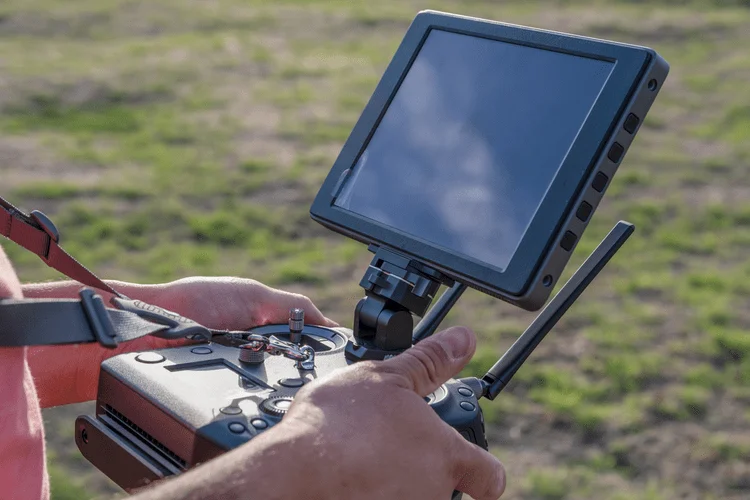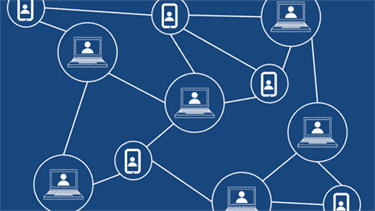Despite these limitations, fog computing proves to be a viable option for IoT initiatives that require low latency, enhanced privacy, and offline capabilities. Cloud computing depends closely on centralized networking and communication, utilizing large knowledge centers to connect customers to information and functions. In distinction, fog computing operates by way of a extra distributed community, with particular person units serving as factors of contact between customers and information sources. This permits for faster communication speeds and more environment friendly useful resource allocation, making fog computing a gorgeous alternative for many trendy applications. At a basic level, cloud computing and fog computing are similar in that they both contain the distant use of computing power and sources. However, when it comes to capability, there are some essential differences between the two approaches.
- This infrastructure known as the fog layer, and it supplies further computing assets and services to edge gadgets.
- This is especially important for purposes that require real-time data processing, corresponding to industrial IoT and autonomous vehicles.
- Firstly, it offers just about limitless storage and computing power, allowing for the dealing with of massive datasets.
- In this submit, we will discover the important thing variations between cloud and fog computing and explain why fog computing and cloud computing are becoming increasingly well-liked amongst companies.
- One essential distinction between fog computing and cloud computing is velocity.
Configuring fog computing provides organizations more choices for processing knowledge in a proper method, which is advantageous. Fog computing has control over the information that can be managed regionally and transferred to the server. Fog computing, also called fog networking, is a dispersed computing system where data is conceptually stored in a location between the info source and the cloud. The present developments have altered, and all companies are demonstrating an interest in expertise innovation. While fog devices are resource-constrained in comparability with cloud servers, their decentralized nature and geological unfold improve service reliability, covering vast areas. In essence, fog computing is a bodily location of computing gadgets a lot nearer than cloud servers.
Location Of Service
By 2020, there will be 30 billion IoT units worldwide, and in 2025, the number will exceed 75 billion linked things, in accordance with Statista. All these gadgets will produce large amounts of knowledge that will have to be processed quickly and in a sustainable means. To meet the rising demand for IoT options, fog computing comes into motion on par with cloud computing. The purpose of this text is to compare fog vs. cloud and tell you extra about fog vs cloud computing prospects, in addition to their execs and cons. On the opposite hand, cloud computing presents centralized information administration and pay-as-you-go models. This makes it an easy-to-implement and cost-efficient option for businesses, specifically SMBs.

This allows gadgets to speak extra easily and quickly with one another, giving them larger agility in responding to altering situations. Moreover, fog computing tends to be better suited to smaller networks with lower throughput requirements than bigger ones. In addition to providing quick and easy accessibility to information, cloud computing additionally allows for real-time collaboration amongst people and organizations. Compared to fog computing, cloud computing has a quicker system response time.
Additionally, reliance on the internet introduces latency and the risk of service disruptions in case of community outages. Edge computing and fog computing are two complementary computing fashions which may be designed to address the challenges of processing and analyzing knowledge in real time. Edge computing brings computing closer to the supply of information, whereas fog computing extends the capabilities of edge computing by offering additional computing assets and providers to edge gadgets. Both fashions have many practical applications in at present’s digital age and can play an more and more important function in the way ahead for computing. There are some key differences by means of where these services are literally situated. This permits it to supply quicker response instances and safer data dealing with but comes with certain constraints in phrases of scalability.
Isa Provides Leading Industrial Cybersecurity Content At London Event
On the opposite hand, edge, and fog computing frameworks are best suited if your corporation provides functions that require quick responses for correct decision-making in real-time. In contrast, whereas fog computing can be distributed geographically, it’s usually more localized than cloud computing and should solely occupy a single geographic location. This design allows for higher location consciousness with fog computing, as the information being processed by every individual node of the system is instantly relevant to its physical environment. Improving efficiency and effectivity can provide enhanced privacy, safety, and reliability for related devices by reducing their dependency on the internet. Overall, fog computing represents a major shift in how knowledge is collected and processed, offering exciting new possibilities for connecting gadgets and managing info in new ways.
Fog computing, then again, works better as a half of a distributed system where units are located closer to users and require some type of physical connection to have the ability to entry knowledge or send commands. There is lots of debate in the tech world in regards to the relative deserves of cloud computing and fog computing. Both methods have their pros and cons, however one key issue that sets them aside is responsiveness. In terms of speed and effectivity, cloud computing has a transparent edge over Fog computing. Only in cloud computing, it’s possible to combine multiple data sources, including the device and the cloud computing information supply. Cloud fails without an internet connection, whereas Fog succeeds even without one as a end result of it follows many procedures and guidelines.
In distinction, Fog computing distributes assets far more locally, successfully bringing the processing power nearer to the user. Cloud computing refers to the delivery of on-demand computing assets over the web. It includes centralized data facilities that present scalable computing power, storage, and companies to customers on a pay-per-use basis.

Both utilize networks of knowledge facilities that are distributed throughout totally different places, permitting for increased mobility and suppleness in accessing information. Whereas cloud computing relies closely on centralized servers and communication channels, Fog computing spreads resources extra evenly throughout the community. Fog computing, also identified as edge computing, brings computational assets and providers nearer to the sting of the community, close to the information sources and end-users. It goals to supply real-time processing, low-latency communication, and decreased bandwidth usage by decentralizing computation and storage capabilities to edge devices and fog nodes. One necessary difference between fog computing and cloud computing is pace. Cloud computing depends heavily on centralized servers which may be located distant from users, which can result in slower response times and lag.
What’s Shift Left Security?
There is an enormous debate presently on which know-how is better for businesses – fog computing or cloud computing. Here, we’ll discover the key advantages of both technologies to be able to differentiate cloud computing from fog computing and make an informed choice for your business. This means that cloud computing tends to be extra weak to points with quality and consistency than fog computing since failures at one location affect the complete system. Ultimately, while each models have their advantages and drawbacks, it’s clear that cloud computing just isn’t a great possibility for all functions and industries.

Fog lovers (Foggers? Fogheads?) believe that the structure is more scalable and provides a extra complete view of the network and all of its data collection points. Additionally, fog computing can help to scale back bandwidth requirements and costs by lowering the amount of data that needs to be despatched to the cloud for processing. As a result, fog computing is a crucial element of many IoT applications.
What Edge Units Do I Need?
So, it’s not simple to govern useful information compared to cloud computing with centralized knowledge processing. Edge computing is a distributed computing framework that enables localized knowledge processing and analytics. It brings enterprise functions near knowledge sources corresponding cloud vs fog computing to local edge servers or IoT devices. It regulates which info ought to be despatched to the server and which may be processed regionally. In this fashion, fog is an intelligent gateway that offloads clouds enabling more efficient knowledge storage, processing and analysis.
Client-based fog computing is ideal for purposes that require real-time processing, similar to autonomous automobiles and industrial IoT. Fog computing is a distributed computing model that is designed to enrich edge computing. It extends the capabilities of edge computing by providing a layer of computing infrastructure between the sting devices and the cloud. This infrastructure is called the fog layer, and it offers further computing resources and companies to edge gadgets. Edge computing and fog computing are two ideas that are usually used interchangeably, however they have essential differences.

While edge computing use circumstances are nonetheless restricted within the enterprise landscape, its potential influence can’t be ignored. The autonomous automobile makes use of edge computing for accurate path planning and automobile control. The identical ideas can be applied by enterprises to accelerate data-to-insights journey with edge computing.
Disadvantages Of Cloud For Iot
Cloud-based storage companies like Google Drive and Dropbox that enable saving, accessing, and sharing files on-line are glorious examples of cloud computing in motion. These services enable users to addContent essential paperwork to the cloud and entry them from any device. The service suppliers guarantee data safety whereas finish customers pay for cupboard space. Among the most important variations between these two forms of computing is their working environments.
But cloud computing expertise alone just isn’t efficient enough to store and process huge amounts of knowledge and reply shortly. To overcome the challenges and maximize the benefits of both fog computing and cloud computing, it’s typically advisable to combine these two models in IoT initiatives. In today’s digital era, the Internet of Things (IoT) has revolutionized the way we live and work. With billions of linked devices generating huge amounts of knowledge, it has become crucial to have efficient computing models that may handle this knowledge successfully.

Fog and edge computing can improve security by offering further security measures to edge units, such as encryption and authentication. Cloud computing has superior security measures in place to safe knowledge within the cloud, while fog computing focuses on offering safety measures to edge units. For instance, in the Tesla self-driving automotive, the sensor constantly screens sure areas around the car. If it detects an obstacle or pedestrian on its method, then the car should be stopped or move round with out hitting.
Plus, there is no need to maintain up native servers and worry about downtimes – the vendor helps everything for you, saving you money. If you’re looking for the best devoted server provider to increase efficiency, contact RedSwitches right now. We supply a broad range of providers at unbeatable costs that might be custom-made in every method to swimsuit your needs. The new technology is prone to have the greatest influence on the development of IoT, embedded AI and 5G options, as they, like never earlier than, demand agility and seamless connections. Unfortunately, there might be nothing immaculate, and cloud expertise has some downsides, particularly for the Internet of Things providers. According to Statista, by 2020, there will be 30 billion IoT units worldwide, and by 2025 this number will exceed seventy five billion connected issues.
Moreover, concerns about knowledge privateness and safety come up when delicate information is transmitted and stored on remote servers. Additionally, the price of cloud providers could be a significant issue, especially for IoT projects with giant data volumes. Despite these limitations, cloud computing remains a well-liked choice for IoT tasks that require intensive storage, computational energy, and accessibility. Before delving into the specifics of fog computing and cloud computing, it is essential to grasp the character of IoT projects and their distinctive necessities.